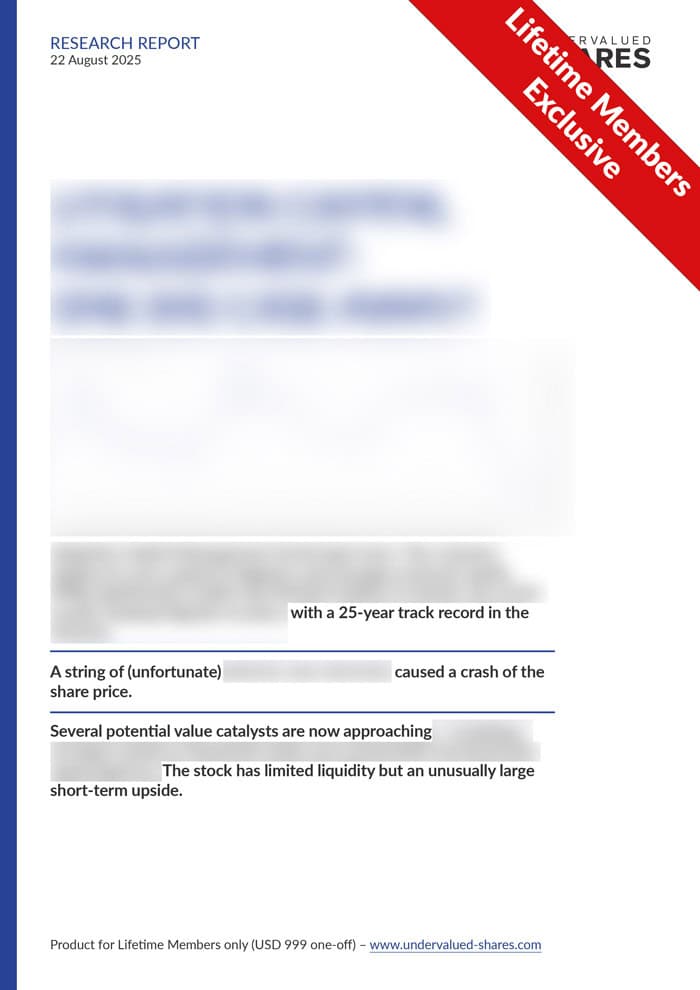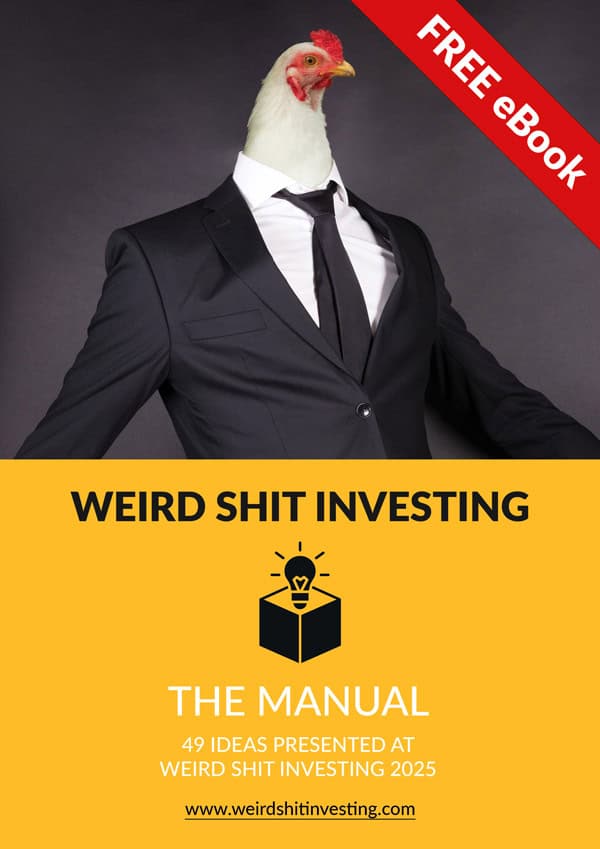Seaport Entertainment Group is a NYSE-listed play on the revival of New York’s southern tip. I visited the neighbourhood to evaluate the opportunity.
Sotheby’s as a reliable recession indicator – and the time will come when to buy this share
Image by freemind productions / Shutterstock.com
All four of the last recessions and financial crises were reliably predicted by the share price of Sotheby’s, the world-renowned auction house. When Sotheby’s loses a lot of its value, difficult times are usually right ahead. Shareholders of Sotheby’s seem to have a sixth sense for an impending crisis.
Admittedly, this is an observation that I stole from another author. Holger Zschäpitz has one of the very few Twitter feeds I keep an eye on, despite not even having a Twitter account myself. His daily choice of charts and figures is one of the most insightful, pointed finance feeds I have come across. Credit to him for reminding me recently that Sotheby’s share price doubles up as a crisis indicator.
Compared to its 2018 high, Sotheby’s shares, which are listed in New York under the incredibly suitable ticker symbol “BID” (genius!), have lost over a third of their value.
Now that the US yield curve has inverted and many bank shares are in virtual free-fall, it seems that Sotheby’s recent share price movements have once again proven to be the canary in the coal mine.
Which is great, because it’ll make for a great buying opportunity one day. Here is why.
One of the world’s great duopoly companies
Operating an auction house is a business that is open to any entrepreneur who feels like opening one. Just register a company and put your shingle out. In theory, there should be plenty of competition and a plethora of auction houses to choose from.
In reality, however, that is not how the auction business works. In those sectors of the art market that the most high-priced items reside in, Sotheby’s and its archrival, Christie’s, seem to have a forever constant market share of over 80%. If you are out to buy an Impressionist painting or modern art piece in the category of $1m+, you are more likely than not going to end up at either Sotheby’s or Christie’s.
Many an effort has been made by other auction houses and well-heeled financiers to break into this lucrative market. None of them succeeded. Nor is anyone ever likely to succeed, for a simple reason.
Most high-priced art comes to the market because of inheritance cases. Executors and trustees of estates are, for a variety of reasons, extremely risk-averse. To avoid legal or reputational risks, they virtually all go to Sotheby’s or Christie’s as the two default options. If they went to anyone else, and an auction failed to deliver the right results, they’d be blamed for making a risky choice. Going with Sotheby’s or Christie’s, however, means that a less favourable auction result can credibly be put down to “the market is bad” or similar excuses. No one will get into trouble.
For this reason alone, Sotheby’s (and Christie’s) will continue to rule the waves of the high-end auction business.
Even Bonham’s, the reasonably well-known 18th-century British auctioneer, captured less than a 1% market share in some of the leading categories of art sales. Bonham’s had strong financial backing, but only managed to make inroads in niche areas and as some say rather cynically, “picks up the crumbs that fall off the table.”
For economists and students, Sotheby’s makes for a great case study on a company achieving a quasi-monopoly – shared with a second market participant of essentially equal stature, hence technically speaking a “duopoly” – without this market having any significant legal barriers to entry. There is not even the usual battle for market share through innovation, as is the case between Boeing and Airbus. It’s a truly unique situation!
Where’s the risk then?
Auction houses do vie for market share among each other, and there is one variable they compete over.
In the 1970s, Sotheby’s realized that it could charge fees not just to the sellers, but also to buyers. Ever since the buyer’s fee has become an increasingly important factor in this market.
To compete for the mandate to sell off big estates, Sotheby’s competes with its rivals by offering to offload a growing amount of fees onto the buyers. The calculation of these buyer’s premiums is tricky, and it’s virtually impossible to calculate the exact buyer’s premium on the fly. Remarkably, anyone bidding for a high-priced piece of art nowadays cannot tell in advance what the exact final price will be. That’s infuriating for bidders, but it has become one of the accepted realities of that market.
Whenever Sotheby’s or Christie’s increased their buyer’s premium, everyone else pretty much followed in lockstep. There have been accusations and legal cases over anti-trust abuse. But on the whole, the market has been shifting towards buyers being charged increasing fees.
An auction house that has strong financial backing could, in theory, try to aggressively grow its market share by foregoing buyer’s premiums. However, would that change anything for risk-averse executors and trustees of estates? Given that they are dealing with money that they didn’t have to earn themselves, it’s likely that they will remain as risk-averse as ever and stick to the two Big Ones.
Which is why, on the other end of the equation, Sotheby’s has been a great investment to buy into towards the later stage of recessions and crises. The company, and its share price, always recover!
Keep an eye out for Sotheby’s shares
The world economy hasn’t even entered a recession yet, and stock markets have so far really only seen a correction after years of ever-rising asset prices. Only young, naïve market participants would currently speak of a bear market.
If we are entering a full-blown financial crisis, then chances are that you ain’t seen nothing yet. There’ll be blood running in the street, and there’ll eventually be utter desperation and surrender. This will then be an excellent time for bottom-fishing. I have no idea if that will happen in the foreseeable future. In any case, we are far away from the sort of sheer desperation that comes with true crashs.
During the 2008 crisis, Sotheby’s shares fell from $60 to $10. Which was a tad extreme, but goes to show what markets do when the tide turns. In rising markets, everything goes up much further than anyone would have ever thought possible. And vice versa.
So far, the company’s share price has fallen from $60 to $39. That’s not enough of a fall to make it appealing to buy into the company, but it’s certainly made it a share to keep on the watch list.
This is a company with a business model that has proven crisis-resistant, not for decades, but centuries!
No matter what happens, people will die, estates will be sold off, and margins in this peculiar business are unlikely to ever seriously be challenged. There’ll come the point where it’ll be irresistibly cheap to buy into, with a view to holding it for a few years while the markets – and the economy – recover.
With that in mind, it’s a stock that I check the price of regularly. During the next horrendous crisis, I have every intention to pounce!
Did you find this article useful and enjoyable? If you want to read my next articles right when they come out, please sign up to my email list.
Share this post:







